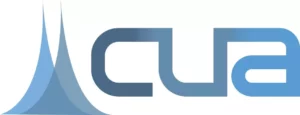 Patterning Transparent Conductive Oxide [TCO] layers on substrates such as glass or plastic is a familiar laser micromachining application at Potomac. We’ve developed innovative ways to pattern the TCO layer without damaging the underlying substrate. But we usually see TCO’s such as Indium Tin Oxide [ITO] used in Displays, Touch Panels, RFID tags, Strain Gauges, Carbon Nanotube Coatings, or most commonly, Solar Photovoltaics. Recently we had the opportunity to take a tried and proven technique to a new ITO patterning project in basic physics research. Here’s the story:
Patterning Transparent Conductive Oxide [TCO] layers on substrates such as glass or plastic is a familiar laser micromachining application at Potomac. We’ve developed innovative ways to pattern the TCO layer without damaging the underlying substrate. But we usually see TCO’s such as Indium Tin Oxide [ITO] used in Displays, Touch Panels, RFID tags, Strain Gauges, Carbon Nanotube Coatings, or most commonly, Solar Photovoltaics. Recently we had the opportunity to take a tried and proven technique to a new ITO patterning project in basic physics research. Here’s the story:
The Center for Ultracold Atoms (CUA) is a unique partnership between the Massachusetts Institute of Technology (MIT) and Harvard University to pursue research in the new fields that have been opened by the creation of ultracold atoms and quantum gases.
The CUA is a National Science Foundation (NSF) Physics Frontier Center with research conducted by a community of approximately 100 graduate students, postdoctoral researchers, undergraduate students and visitors who work under the supervision of the Center’s senior investigators in collaborative projects.
A group at CUA manipulates matter on a quantum level in order to probe interesting properties that might lead to new types of materials and devices. Zoe Yan, a graduate student in the Center, has been working on an experiment that required a custom electrode plate that would be used to “tune” a sample of ultracold molecules. Ms. Yan describes the experiment: “We create a strong electric field to manipulate molecules and tune around the electric field gradients. I needed a plate that could be uniformly applied at a specific voltage.”
The CUA labs only had CO2 lasers that were not adequate for the ITO patterning. In looking for a solution, Ms. Yan realized she needed a vendor who could pattern with a IR laser that would not induce thermal damage to the ITO layer. She explains that the ITO needed to be patterned without going into the substrate. “Since Potomac has the ability to focus down to spot sizes as small as one micron”, Ms. Yan explains, “we could also get the high precision we needed – which other processes such as acid etching cannot achieve. Potomac Photonics did an excellent job patterning our ITO plate to our desired specifications without any damage to the ITO or the substrate.”
This new field of Ultracold Atoms physics is aiming to control atoms and molecules so that they can bring their quantum nature to forefront for applications such as developing new Superconductor materials. It will be interesting to follow the work and see where the basic research leads us in the future of new materials and ultimately, new devices.


